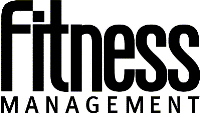
I must be either overly naive or overly trusting. With the possibility of having a heart attack increasing exponentially after the age of 45, and the number of older adult members in health clubs increasing each year, I just assumed that all fitness facilities now have AEDs. Especially in light of the recent laws passed that 1) require AEDs in most public places, including fitness facilities (knowing that exercise increases the risk of cardiac arrest by a multiple of 20), and 2) release individuals who employ the use of AEDs to assist heart attack victims from liability. But, apparently, my risk of having a heart attack is of no concern to certain health club chain operators. Namely: Bally Total Fitness and 24 Hour Fitness.
At least that’s what the family members of Gary Fowler and Richard Eng found out. The sister of Gary Fowler was kind enough to email me about the ruling in the lawsuit on behalf of Fowler against Bally Total Fitness, which she thought might be of interest to the readers of our magazine and blog. And, no doubt, it will be (if you aren’t already in the know), especially because you won’t want to find your own facility in such a predicament.
First, let’s look at the facts about heart attacks. According to the International Health, Racquet and Sportsclub Association, the majority (or 53 percent) of fitness center members are over the age of 35 (20 percent are over the age of 55). The results of several large studies have concluded that the major risk factor for having a heart attack is age. In fact, if you look at the website Health and Age, you’ll find a chart that shows the results of a 26-year follow-up Framingham Heart Study, which details the sharp increase of heart attack risk after the age of 44. It’s pretty staggering.
And, Bally Total Fitness and 24 Hour Fitness executives know this. But, they have failed to show they care. In November 2005, Fowler collapsed from sudden cardiac arrest and died while exercising at a Bally club in Gaithersburg, Montgomery County, Md. There was no AED on the premises, despite the fact that a Montgomery County ordinance in effect at the time required the installation of AEDs in health clubs. Bally’s attorneys, however, argued that, due to a Home Rule amendment in the town of Gaithersburg, the ordinance did not apply. The judge, James Eagan, disagreed:
“This Court cannot discern any logical reason why Bally would not employ AEDs at its Gaithersburg facilities, considering it was already obligated to deploy AEDs throughout the rest of Montgomery County. Such action on the part of Bally smacks of indifference to the welfare of its patrons. … There is no denying the fact that Bally knew with 100 percent certainty that dozens of its members would suffer heart attacks and die each year, and, instead of pursuing a relatively cheap and easy solution to the problem through the deployment of AEDs at its health facilities, Bally chose to consciously disregard this known risk. That strikes this Court as the very definition of gross negligence.”
And, to show just how blatantly negligent Bally’s decision to not employ AEDs is, a story on Gazette.Net reports that, “This is the sixth case against Bally for failure to have AEDs, and, in at least four of them, Bally settled for confidential amounts.” What I find even more sad is the fact that, according to the report on the Weinberg and Garber website, attorneys for Fowler, “employees did not immediately begin CPR when responding to Mr. Fowler’s collapse; instead, club members, realizing that staff would not do so, performed CPR.”
Weinberg and Garber also acted as co-counsel in the case filed on behalf of Richard Eng, a member of 24 Hour Fitness in the San Francisco area, who suffered cardiac arrest and, due to lack of prompt response, is severely brain damaged and now requires around-the-clock medical care. 24 Hour Fitness failed to have an AED on the premises. And, Weinberg and Garber report that this is despite management’s “knowledge that 20 to 40 of its members were dying of cardiac arrest each year.” What’s worse is that “24 Hour Fitness actually refused an offer, as part of an American Heart Association program, of free AEDs and training in 2001 at its northwest clubs,” says Weinberg and Garber. “The admitted reason: It might have been a basis to argue that all of its clubs should be similarly equipped.” And, even though 24 Hour Fitness requires CPR training of employees, it does not require that employees so trained actually use CPR to help a stricken member.
Again, I may be naive or overly trusting, but I believe, per my conversations with fitness center operators, that most facilities do have AEDs on their premises. But, as a member of a large fitness club chain, if I suffer a heart attack while working out, I won’t hold my breath waiting for help from the staff. Of course, I won’t have to.

3 comments:
Wasn't it 24 Hour years ago that placed a tarp over a recently deceased member (who had an MI) and made members step over the body to workout?
Your readers may also be interested in knowing that Bally did not place AEDs in any of their Montgomery County fitness centers, as required by the ordinance, until 3 days after Gary's death. Thanks for the article.
Actually, 24-Hour did finally deploy AEDS nationwide about a year ago. They started saving members with them almost immediately. I read an article from Montgomery County about the saves in clubs that did have AEDs.Five people were saved in less than one year.
Post a Comment